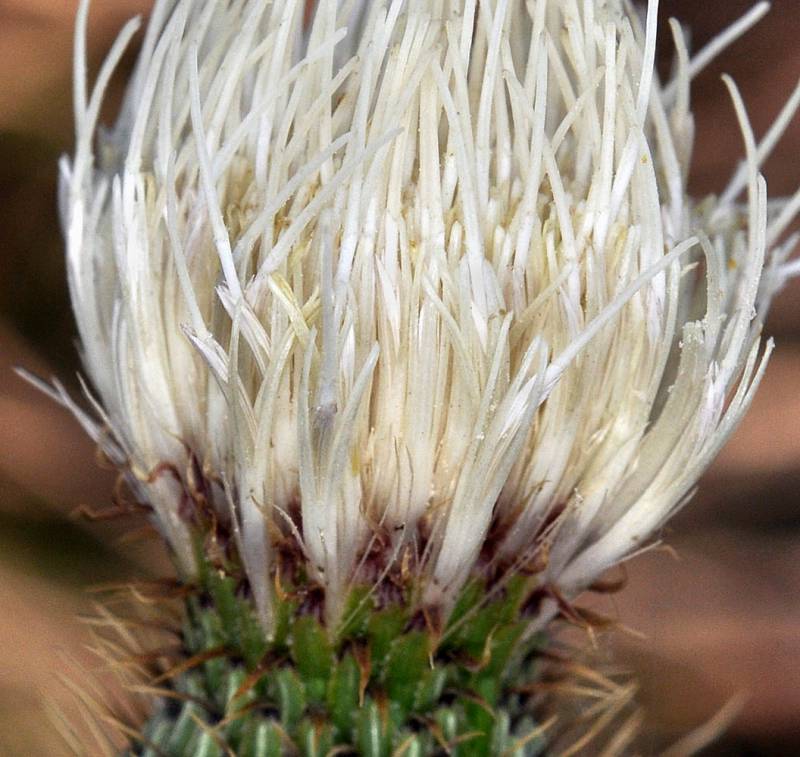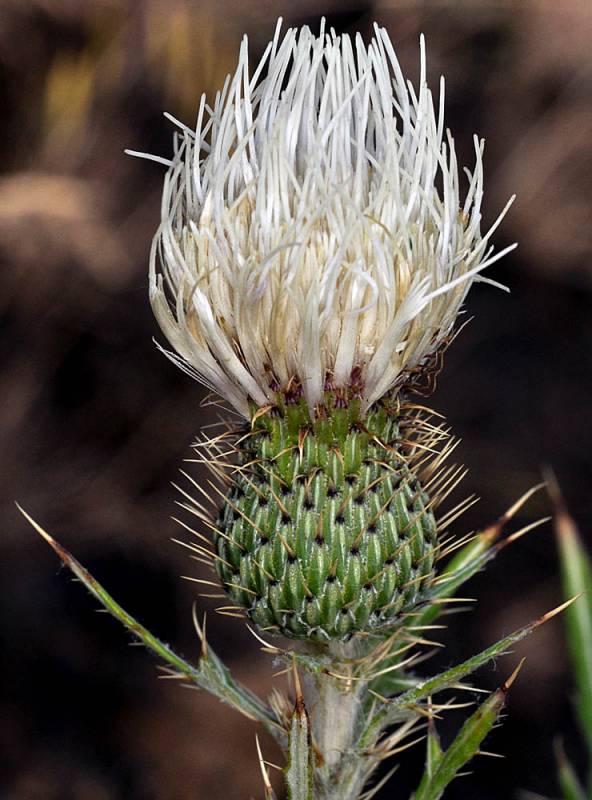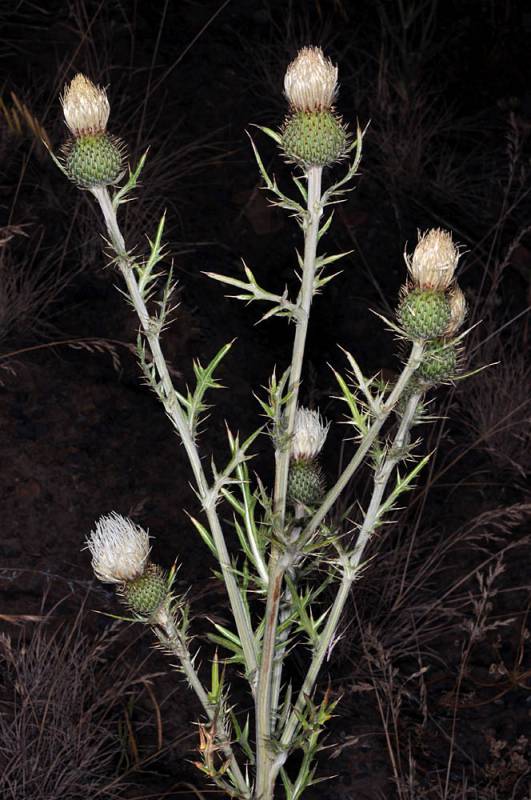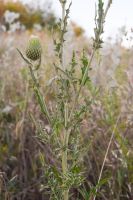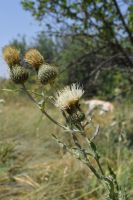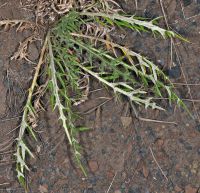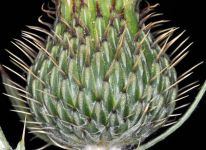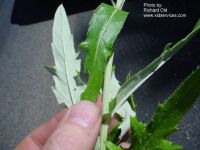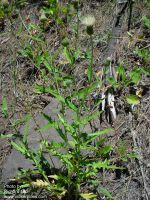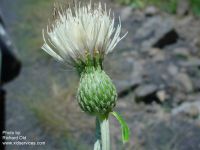Distribution: Occurring east of the Cascades crest in eastern and southeastern Washington; eastern Washington to northeast Oregon and adjacent Idaho.
Habitat: Palouse grassland remnants, dry rocky slopes, and roadsides.
Flowers: June-October
Origin: Native
Growth Duration: Perennial
Conservation Status: Not of concern
Pollination: Bumblebees, bees, butterflies, beetles, hummingbirds
Stout, short-lived perennial spreading from creeping roots, branched above or sometimes below the surface, 3-12 dm. tall.
Leaves up to 3 dm. long, coarsely toothed to pinnatifid, the lobes ovate or deltoid, usually over 7mm. wide, the margins spiny; the leaves green above, but somewhat white-woolly beneath.
Heads several, at the ends of the branches; involucre 2-3.5 mm. high, its bracts well imbricate, with glandular-glutinous dorsal ridges, the inner bracts pointed at the tip, the others with spines 3-5 mm. long; flowers all tubular, white to cream; receptacle densely bristly.
Achenes 3-5 mm. long, light brown.
Publication: Trans. Amer. Philos. Soc., n. s. 7: 421. 1841.
PNW Herbaria: Specimen records of Cirsium brevifolium in the Consortium of Pacific Northwest Herbaria database
WA Flora Checklist: Cirsium brevifolium checklist entry
OregonFlora: Cirsium brevifolium information
E-Flora BC: Cirsium brevifolium atlas page
CalPhotos: Cirsium brevifolium photos

